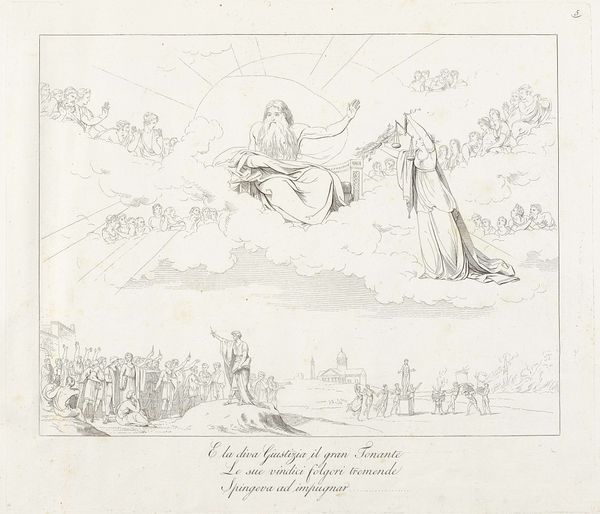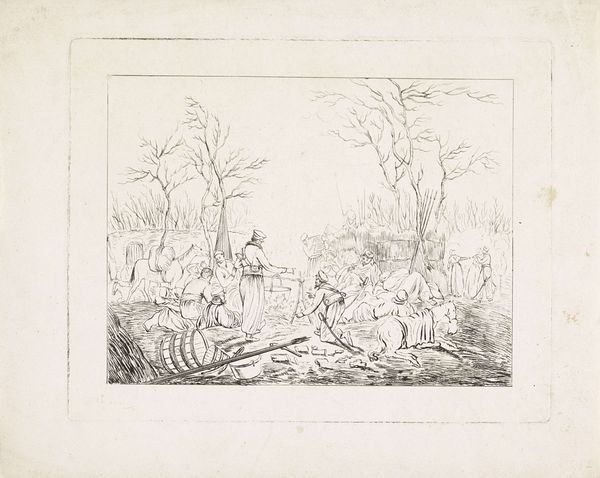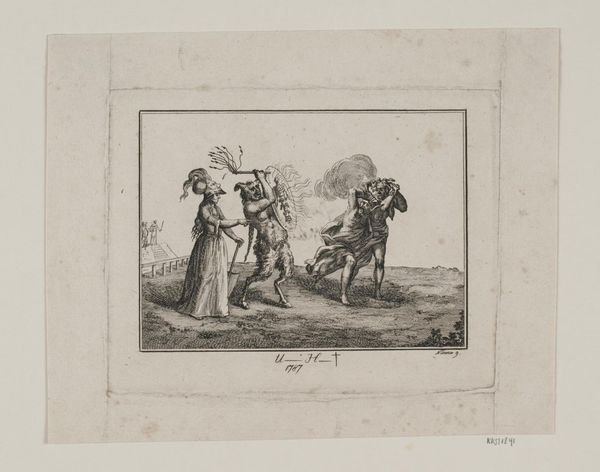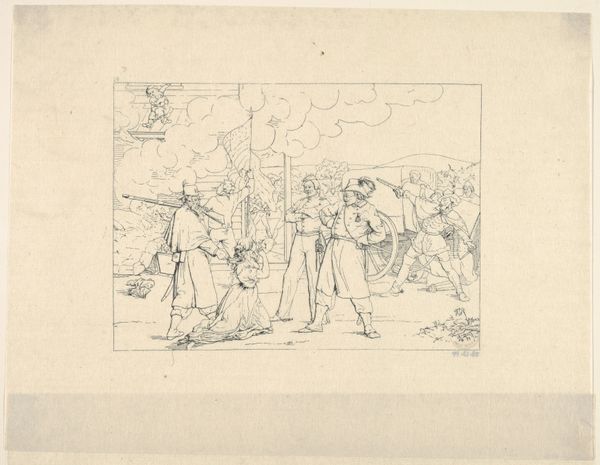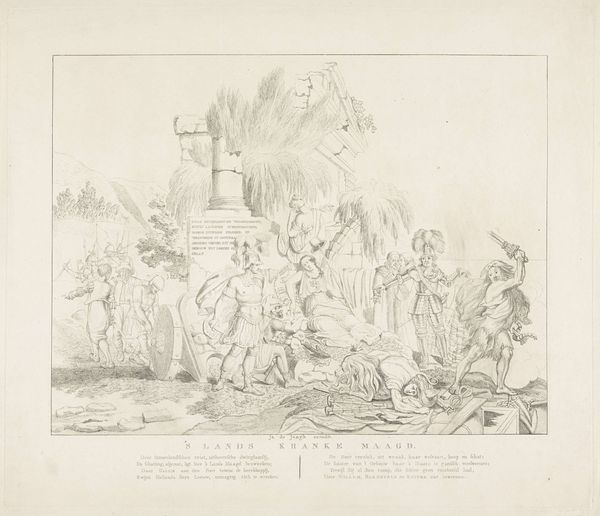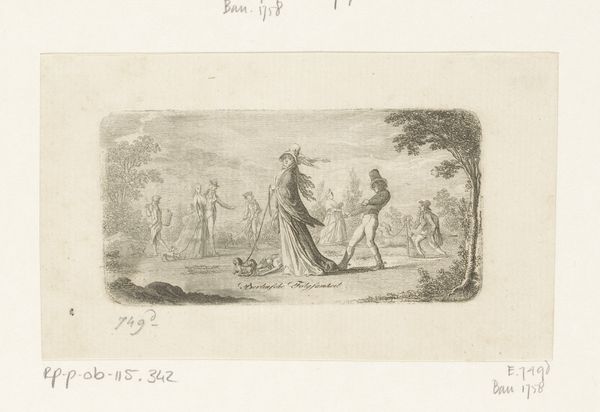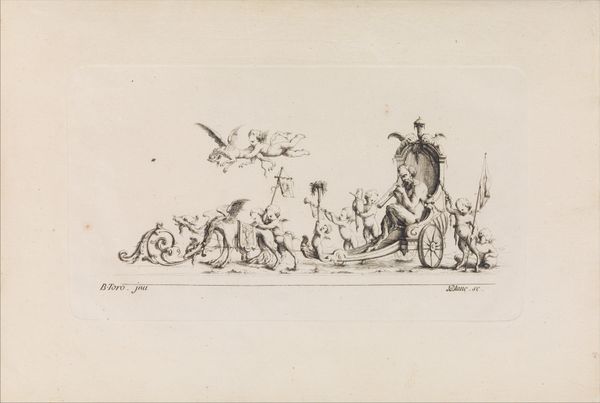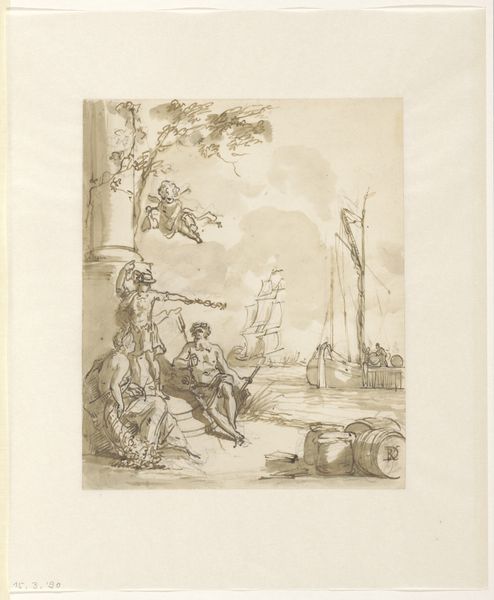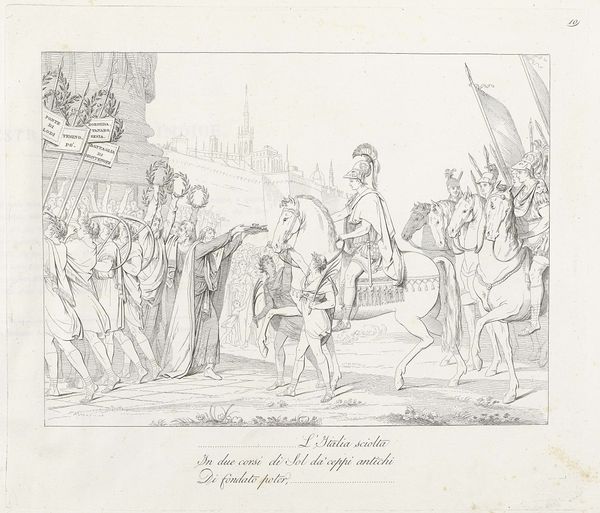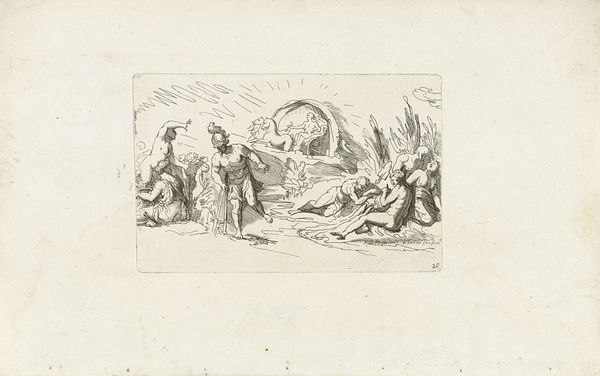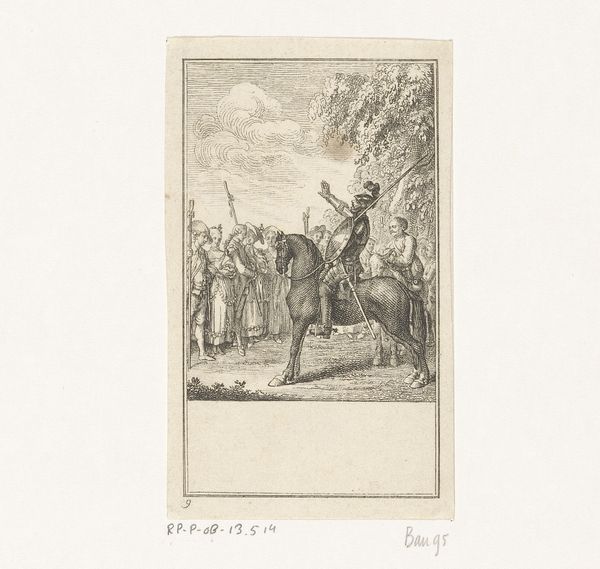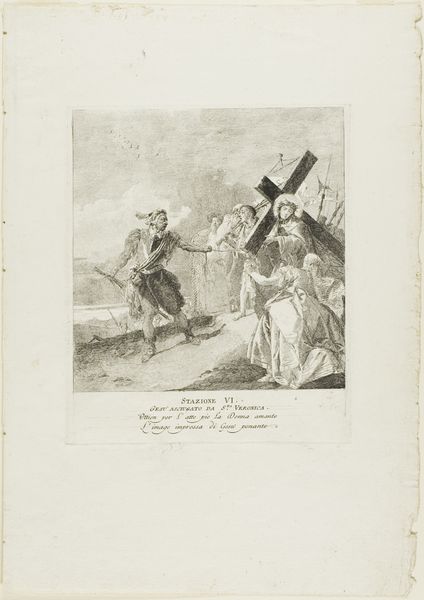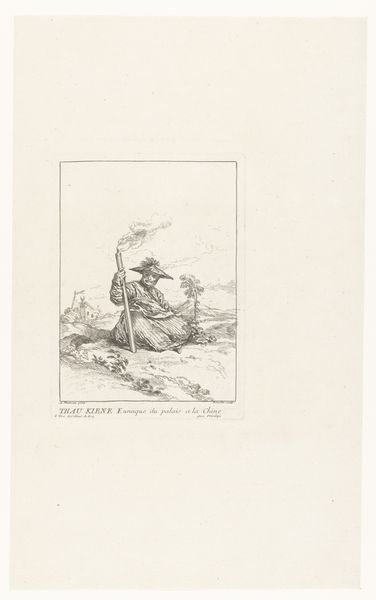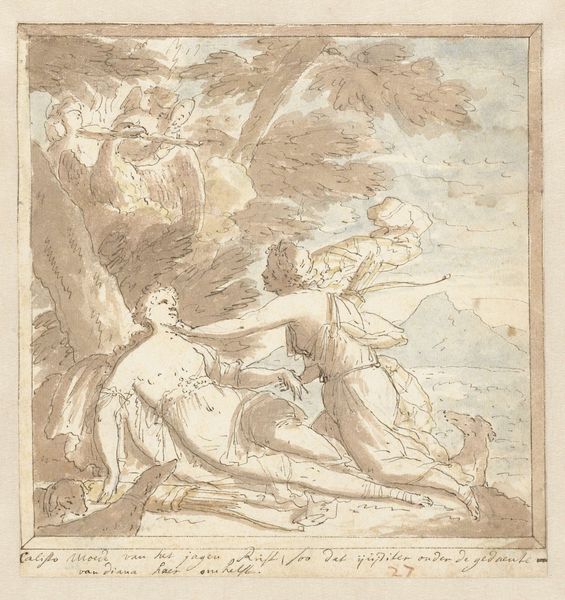
print, engraving
#
neoclacissism
#
allegory
# print
#
landscape
#
classical-realism
#
figuration
#
line
#
history-painting
#
engraving
Dimensions: height 332 mm, width 382 mm
Copyright: Rijks Museum: Open Domain
Curator: This print is titled "Pronea verschijnt aan Napoleon," or "Pronea Appears to Napoleon," created in 1808 by Teodoro Matteini. What strikes you about it? Editor: Well, the figure of Napoleon seems… submissive, almost pleading. It's quite an image considering the power associated with him. There’s a sense of staged awe that I find immediately interesting. Curator: Absolutely. Matteini renders Napoleon in a rather vulnerable position, encountering Pronea. It's a masterful application of allegory here, linking Napoleon to destiny through Pronea's visitation. Consider the deliberate symbolism—Pronea, attended by celestial figures, descends with light emanating from above. Light from above can often signify devine approval and blessing. Editor: The landscape elements in the engraving do also seem crucial for context. We have a classical building suggesting legacy and civilization in the background juxtaposed with this almost operatic encounter between Napoleon and Pronea, It is impossible not to look at this without situating Napoleon as an autocrat but what Matteini does is suggest, instead, some sort of endorsement from both history and destiny itself. Curator: The clean lines typical of neoclassical art imbue the scene with a sense of clarity, as if everything is rationally ordained. Do you think this style lends a particular authority to the depicted event? Editor: Absolutely. It's meant to appear rational, timeless, almost inevitable. But I can't help reading it through a lens of propaganda. Matteini presents Napoleon not as a self-made leader but as one divinely chosen. The emotional intensity is meant to manipulate our perception of Napoleon. The phrase in Italian at the bottom – "La celeste Pronea... in me conosci" – "The celestial Pronea... know yourself in me," suggests introspection. The scene makes me question whether Napoleon actually did find justification through this encounter or if it was just theatre. Curator: It could be read either way, which speaks to the lasting power of visual symbolism. Regardless, it provides us a compelling portrait of an individual poised between political ambition and a claim of providential appointment. It is easy to see the ways in which, for Napoleon, these qualities are intertwined and hard to tease apart. Editor: Well, thinking about it that way, this is far more insightful than it appeared initially, at least to me. It speaks to the intersection of art, power, and identity.
Comments
No comments
Be the first to comment and join the conversation on the ultimate creative platform.
